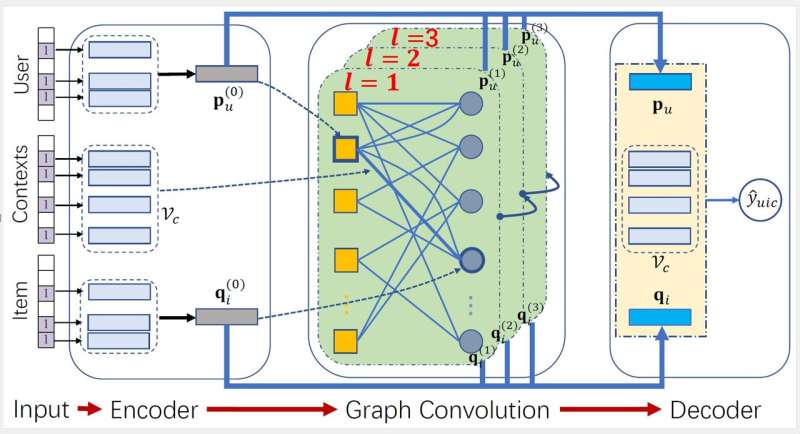A graph convolution machine for context-aware recommender systems

The latest advance in recommendation technology shows that better user and item representations can be learned via performing graph convolutions on the user-item interaction graph. However, such a finding is mostly restricted to the collaborative filtering (CF) scenario, where the interaction contexts are not available.
To extend the advantages of graph convolutions to context-aware recommender systems (CARSs), which represents a generic type of models that can handle various side information, a research team led by Xiangnan HE published their new research on January 22nd, 2022 in Frontiers of Computer Science.
The team developed a new model, GCM, which captures the interactions among multiple user behaviors via graph neural networks, and then models the interactions among features of individual behavior via factorization machine. To demonstrate the effectiveness of GCM, they test it on three public datasets. Extensive experiments also are conducted to verify the the rationality of the attributed graph and offer insights into how the representations benefit from such graph learning.
Organizing user behaviors with contextual information in graphs is a promising direction to build an effective context-aware recommender. It helps build strong representations for users and items. GCM simply unifies all context features as an edge, neglecting the dynamic characteristics of some contexts (e.g., time) and hardly capturing the dynamic preference of users. Future work could be done on building dynamic graphs based on contextual information instead of one static graph, or devising a dynamic graph neural network.

More information: Jiancan Wu et al, Graph convolution machine for context-aware recommender system, Frontiers of Computer Science (2022). DOI: 10.1007/s11704-021-0261-8
















